Chickee talk by Tina Marie Osceola
Good Ol’ Days in Ochopee
On the first of every month, my alarm is set to 4:00 a.m., allowing me several opportunities to swipe the snooze button before I lumber out of bed at 4:30 a.m. I know that at 5:30 a.m. sharp, my dad is going to pull up in front of my house and blow the horn letting me know it’s time to get in the truck and head to Miccosukee for a craft sale at one of Tamiami Trail’s oldest villages. I must have my 30 ounce travel cup loaded with hot tea, English Breakfast of course, and my bag of random snacks and water to last me throughout the day. The mor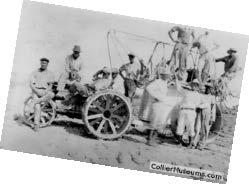 ning drive east along Tamiami Trail, which us locals call, “The Trail,” is usually dark and hazy, so the conversation is at a minimum. My favorite part of the drive is usually when we are westbound for home. We are usually wide awake, and our minds are sharper. This is the best time to ask my dad to reminisce about his life growing up at our family camps along The Trail.
ning drive east along Tamiami Trail, which us locals call, “The Trail,” is usually dark and hazy, so the conversation is at a minimum. My favorite part of the drive is usually when we are westbound for home. We are usually wide awake, and our minds are sharper. This is the best time to ask my dad to reminisce about his life growing up at our family camps along The Trail.
Most of his younger years were spent in the Ochopee area, which is best known for having the smallest post office in the United States. Personally, when I hear of Ochopee, I think of the early to mid-20th century when it was a major hub of what became Florida’s agricultural industry. Most of the area known as the Big Cypress National Preserve was the epicenter of eager pioneers who cashed in on Southwest Florida’s natural resources.
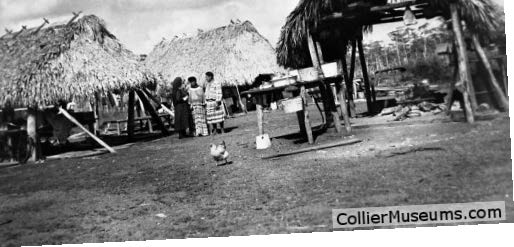 The area known as Deep Lake, which is on SR29 between I-75 and Tamiami Trail, had a very large, substantial grapefruit operation, including a canning operation. Copeland and Jerome, areas to the south of Deep Lake were central to Florida’s Cypress logging industry. Old growth Cypress was cut down and placed on train cars headed north to Perry, Florida where the Lee Tidewater Cypress company had its base of operations. Descendants are still operating this sawmill in Perry today. Although the logging operations were shut down in the mid 1900’s and the land was placed into conservation, that area still shows the scars.
The area known as Deep Lake, which is on SR29 between I-75 and Tamiami Trail, had a very large, substantial grapefruit operation, including a canning operation. Copeland and Jerome, areas to the south of Deep Lake were central to Florida’s Cypress logging industry. Old growth Cypress was cut down and placed on train cars headed north to Perry, Florida where the Lee Tidewater Cypress company had its base of operations. Descendants are still operating this sawmill in Perry today. Although the logging operations were shut down in the mid 1900’s and the land was placed into conservation, that area still shows the scars.
The only evidence of the old logging operations can be found in local place names. For example, the “Tram Road” which many of used to go from Copeland into the south blocks of Golden Gate, and then over I-75 using Everglades Blvd, is a holdover from the days that trams were used to carry logs out of the Cypress hammocks and onto train cars.
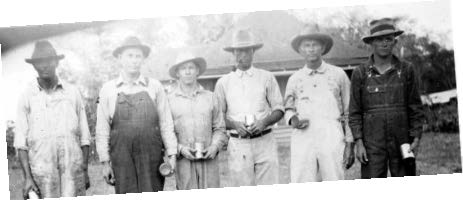 My dad’s memories include working the tomato and vegetable fields around Ochopee in the 1940’s and 1950’s. My grandfather, Cory Osceola, was a foreman who had crews of Seminoles working in the fields. My dad talks about how hard it was picking tomatoes, peppers, and other vegetables that grew in the fields that are now covered in sawgrass. If you didn’t know the history of this area, you would never know these areas existed. His first job after the fields was pumping gas for the Standard Oil Company, a gas station that is one door down from what is now known as Joanie’s Crab Shack, which still stands today. He likes to point out where the old icehouse used to stand and how The Trail was once lined with packing houses, metal buildings, small farmworker communities and Seminole camps. The little post office seems like it was purposefully built there because the area seems so desolate and isolated. However, that building was once a pump house and was turned into a post office after a fire burned most of Ochopee to the ground in 1953. On a recent drive home from one of our craft sales, my dad was reminiscing about all the buildings that used to surround that little pump house. He said there were garages where mechanics worked on farm equipment, trucks and cars, a grocery store, a diner, and a housing community for black farm workers because segregation was the way of the world. He doesn’t like to talk about the bad memories but once in awhile they seep into the conversation reminding me of how important the fight for justice remains.
My dad’s memories include working the tomato and vegetable fields around Ochopee in the 1940’s and 1950’s. My grandfather, Cory Osceola, was a foreman who had crews of Seminoles working in the fields. My dad talks about how hard it was picking tomatoes, peppers, and other vegetables that grew in the fields that are now covered in sawgrass. If you didn’t know the history of this area, you would never know these areas existed. His first job after the fields was pumping gas for the Standard Oil Company, a gas station that is one door down from what is now known as Joanie’s Crab Shack, which still stands today. He likes to point out where the old icehouse used to stand and how The Trail was once lined with packing houses, metal buildings, small farmworker communities and Seminole camps. The little post office seems like it was purposefully built there because the area seems so desolate and isolated. However, that building was once a pump house and was turned into a post office after a fire burned most of Ochopee to the ground in 1953. On a recent drive home from one of our craft sales, my dad was reminiscing about all the buildings that used to surround that little pump house. He said there were garages where mechanics worked on farm equipment, trucks and cars, a grocery store, a diner, and a housing community for black farm workers because segregation was the way of the world. He doesn’t like to talk about the bad memories but once in awhile they seep into the conversation reminding me of how important the fight for justice remains.
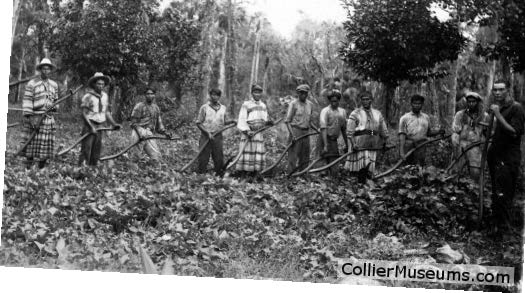 Driving through Ochopee, as the sun starts to set is quite a beautiful scene. However, these conversations with my dad who will be 89 this month, is even more beautiful. Ochopee was the center of my dad’s childhood. The work that he and other Seminoles put into that community with the pioneering families of the area is all but erased from the history and memory of most who live in Collier County. However, it’s still imbedded in the memories of those who come from there and for those few who remain. I like to think that these remnant towns keep folks humble. I know, for me, they reinforce a keen understanding of where I come from and how hard those fought to live so that I could live in the reality that I do today. I stand in the parking lot of that little post office, and I imagine what life was like back then…
Driving through Ochopee, as the sun starts to set is quite a beautiful scene. However, these conversations with my dad who will be 89 this month, is even more beautiful. Ochopee was the center of my dad’s childhood. The work that he and other Seminoles put into that community with the pioneering families of the area is all but erased from the history and memory of most who live in Collier County. However, it’s still imbedded in the memories of those who come from there and for those few who remain. I like to think that these remnant towns keep folks humble. I know, for me, they reinforce a keen understanding of where I come from and how hard those fought to live so that I could live in the reality that I do today. I stand in the parking lot of that little post office, and I imagine what life was like back then…
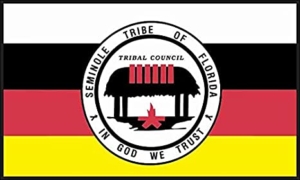
Seminole Tribe Flag
What were the sounds of that farming community like?
What did it smell like?
All I have is my imagination, but my dad is rich with memories.




Leave a Reply
Want to join the discussion?Feel free to contribute!